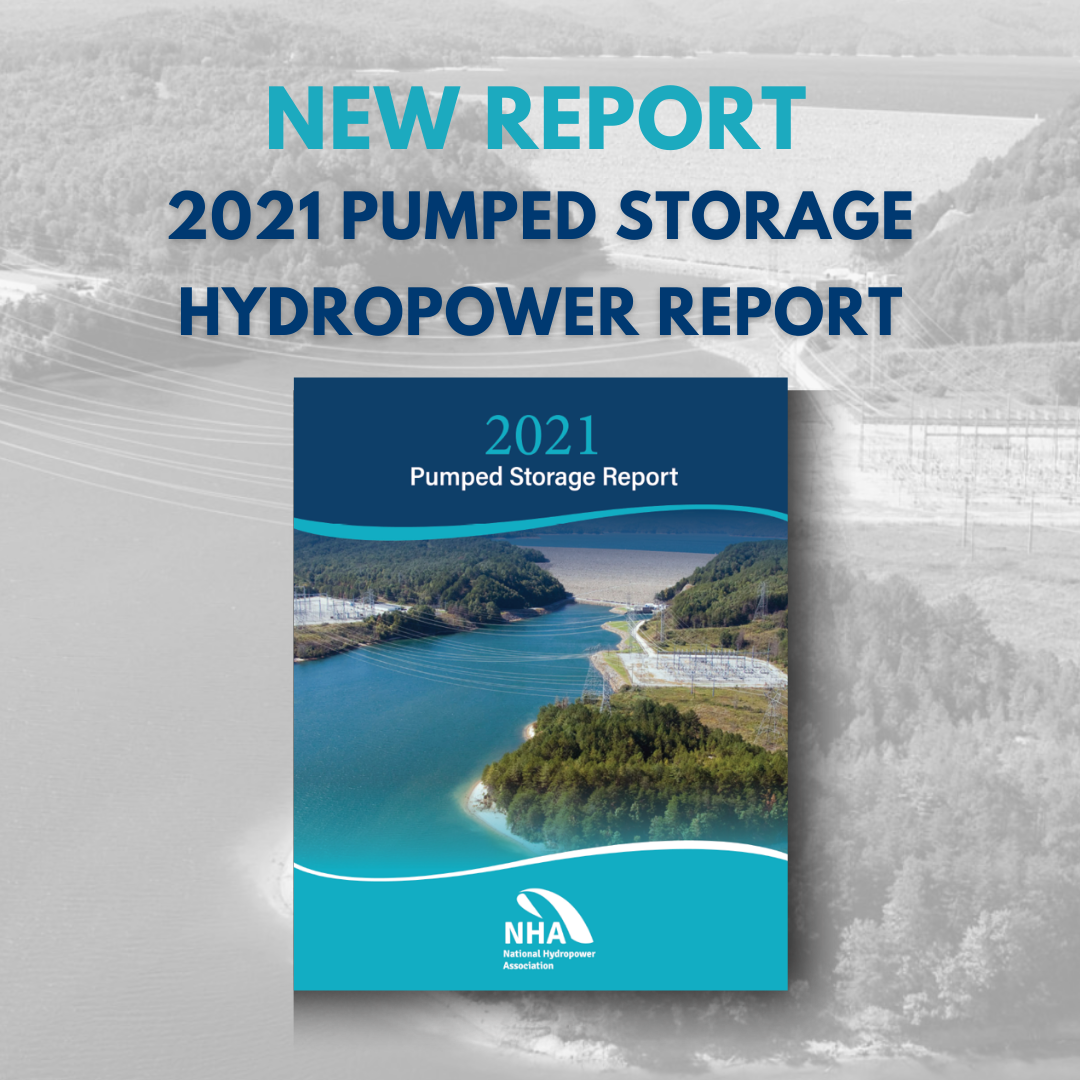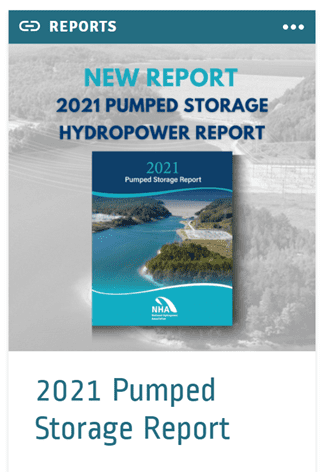The National Hydropower Association’s Pumped Storage Development Council recently released its third iteration of a pumped storage report outlining the technology’s past and future.
The 2021 report aims to be the ultimate pumped storage guidebook for state and federal policymakers, regional grid operators, energy regulators and other stakeholders. The report’s overview of the challenges and drivers of long-duration storage, and the value such storage brings to the grid, is especially informative.
And, a new addition in the report is the “frequently asked questions” section which answers many of the common questions people ask when reading about pumped storage.
In conjunction with the release of the report, NHA interviewed Jennifer Garson, the acting head of the U.S. Department of Energy’s Water Power Technologies Office, regarding pumped storage hydro’s role in meeting President Biden’s 2035 climate goals, as well as the role of the current fleet in managing the clean energy transition.
Here’s what she said:
“94% of the electricity storage on the grid today is pumped storage. Historically, pumped storage has played a critical role in balancing the grid and serving as a critical asset. As we move forward, we really believe the role of pumped storage is only going to grow more dramatically as we look to transform the way our electricity system operates by incorporating renewable energy generation sources like wind and solar.”
Watch the entire interview and the industry panel discussion that followed to get more insight on pumped storage and the challenges in building new projects.
Finding the Guidebook
NHA posted the report in its publicly available Waterpower Resource Library for easy reference. NHA encourages industry to use the report for educating and advocating for pumped storage at the federal, state, and local levels.
“Ultimately, we want the report to be the industry’s ‘go-to’ resource when communicating about the need for new pumped storage development,” says Malcolm Woolf, president and CEO of the association.
Takeaways from the Report
- Pumped storage is the only proven, cost-effective long-duration storage resource
- The need for new pumped storage development has never been greater
- Electricity markets-related policies must change to speed development
What needs to change?
In a word, parity.
Pumped storage is discriminated against in federal tax policy, state storage targets, and utility integrated resource planning.
For instance, federal law and regulations allow for solar plus batteries to take advantage of a 30% investment tax credit (ITC), while pumped storage hydro is excluded. This creates an undue advantage to these storage resources versus long duration technologies.
Policy recommendations that NHA and developers of pumped storage hydro are pushing for include:
- Tax policy – Several proposals in Congress would create a stand-alone ITC for all storage technologies, including pumped storage hydro. A technology-neutral ITC would ensure that pumped storage hydro can compete with other storage resources on a level economic playing field.
- State Procurement policy – States need to send a market signal that long-duration storage will be needed to meet aggressive climate goals. Legislatures should adopt robust long-duration storage targets with long lead times to ensure that the demand is met and that all technologies have a chance to compete.
- Market policy – All grid services need to be fully valued. Many of the grid services that pumped storage hydro provides are either undercompensated or not compensated at all. In regional markets, FERC should ensure there are sufficient compensation mechanisms for frequency response, inertia, flexible ramping, condensing, voltage control, blackstart and other services uniquely provided by pumped storage hydro. In addition, some renumeration should be provided to those technologies — like pumped storage — that can provide broader system benefits that are hard to quantify and measure.
- Utility Procurement policy – Utilities should work with the U.S. Department of Energy, its national laboratories, and developers of pumped storage hydro projects to ensure the full benefits of pumped storage hydro, including the full range of services provided by advanced turbine technologies, are accurately modeled in integrated resource planning (IRP) settings.
- Federal permitting policy – The Federal Energy Regulatory Commission (FERC) and other stakeholders should work to reform the licensing process, including allowing projects with minimal environmental impacts to be expedited.
Continuing the Discussion about Need for Change
At next week’s Clean Currents Conference + Tradeshow, owned and operated by NHA, I am looking forward to opportunities for industry to discuss how to best push for the above policy recommendations with the relevant state and federal policymakers, regional grid operators, energy regulators and other stakeholders.
In particular, two sessions afford such opportunities:
Pumped Storage Development: Moving the Needle – What Obstacles Remain? What Solutions Are Needed?
Understanding Wholesale Electricity Markets; Amplifying Hydro’s Value in these Markets
Look for my insights from those sessions in future POWERHOUSE articles.












